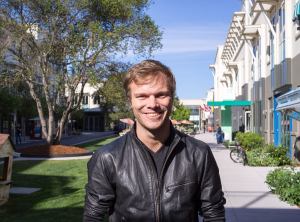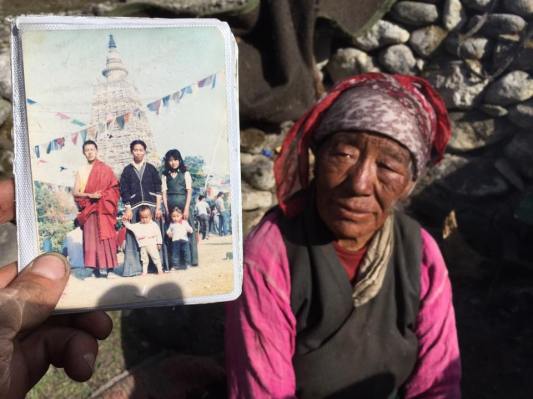Parts of the tech community in San Francisco and New York are still reeling from the loss of Google’s Dan Fredinburg, a gregarious and idealistic engineer who was trying to summit the Mount Everest for the second time when a major earthquake struck, killing him.
However, on a more hopeful note, one person who did survive the avalanche at Everest Base Camp has been traveling through remote villages in the Himalayas, surveying damage and raising more than $40,000 in emergency funds. Just last night, another powerful earthquake hit Nepal again so even more funds are probably needed.
 Former Facebook product manager Dwight Crow had been hiking for an hour near base camp when a 7.8 magnitude earthquake struck near Kathmandu in the worst natural disaster Nepal has faced in nearly a century. He immediately ran into a teahouse, missing the main path of an avalanche that flattened much of base camp.
Former Facebook product manager Dwight Crow had been hiking for an hour near base camp when a 7.8 magnitude earthquake struck near Kathmandu in the worst natural disaster Nepal has faced in nearly a century. He immediately ran into a teahouse, missing the main path of an avalanche that flattened much of base camp.
“I got real lucky,” he said in a phone call from the Nepalese village of Thame. “I thought I was going to die. I didn’t suspect how bad it was until we started hearing about deaths. Our camps was one of the few standing, so we became the de facto medical center.”
They ended up carrying 73 patients in on stretchers into their part of the camp. There were four doctors, one tent for people with head injuries and another for people with shattered legs and pelvises. The doctors worked straight through the night until they got dozens of patients into helicopters the next day.
Many died, however. Crow, overwhelmed with what had happened, went on the road to survey damage in nearby villages.
He ended up in Thame, where 80 of the village’s 119 buildings had been destroyed. That translates into $1 million to 2 million in damages with cheap houses costing about $8,000 to 10,000 to repair and most requiring about $20,000 in work. Most of the village is still living in tents, with four months left to go before the snow begins. Almost all aid is coming from other locals and the country’s military is too thinly stretched to do much more than provide emergency medicine, Crow said.
“They are unbelievably stoic,” Crow said of the Thame residents. “Nobody is sitting there asking for money or aid. There are 70-year-old women spending all day un-piling rocks from their homes.”
The woman in the photo at the top kept digging around her old home. Crow had no idea why. He thought it was to find food. But instead, she was looking for a photo album of her family (see above.)
Crow set up a Tilt campaign that has raised north of $40,000. The IFRC, which is the international organization connecting domestic Red Cross societies, has also put out an appeal for 33.4 million Swiss francs ($35 million) in funding for quake victims.
But micro-funds, including those run by crowdfunding sites, have been a powerful alternate source of capital for villages outside Nepal’s urban core in Kathmandu. Crow said almost all tents and food for villages have been provided by local monasteries, wealthy local individuals or hikers.
“This is a real change in how communities get a hand through disastrous periods,” said Crow.
But he added that government and large NGOs are still important.
“They just seem to have had their hands full in other areas,” he said. “At least in rural areas, the independent response has been just as fast and equal and greater in magnitude than the conventional one.”
Crow said he’s working with a U.S.-based non-profit called The Mountain Institute and a local accountant to monitor how fund are being used and to create audited reports for donors.
“It’s long-term rebuilding that’s going to be a problem,” Crow said. “You can dig out supplies from collapsed housing. But it’s only about two to four months from when they’ll be having six feet of snow.”
